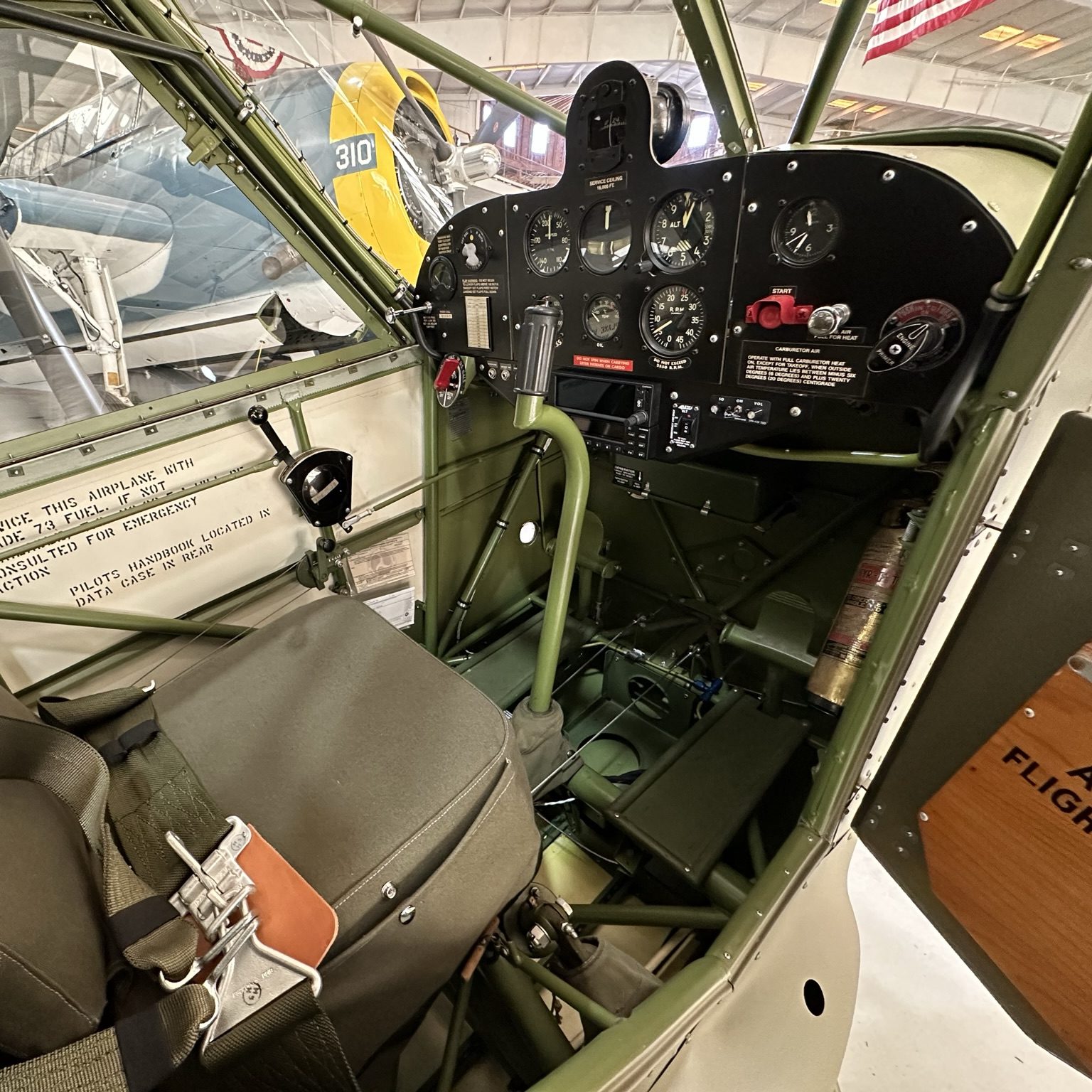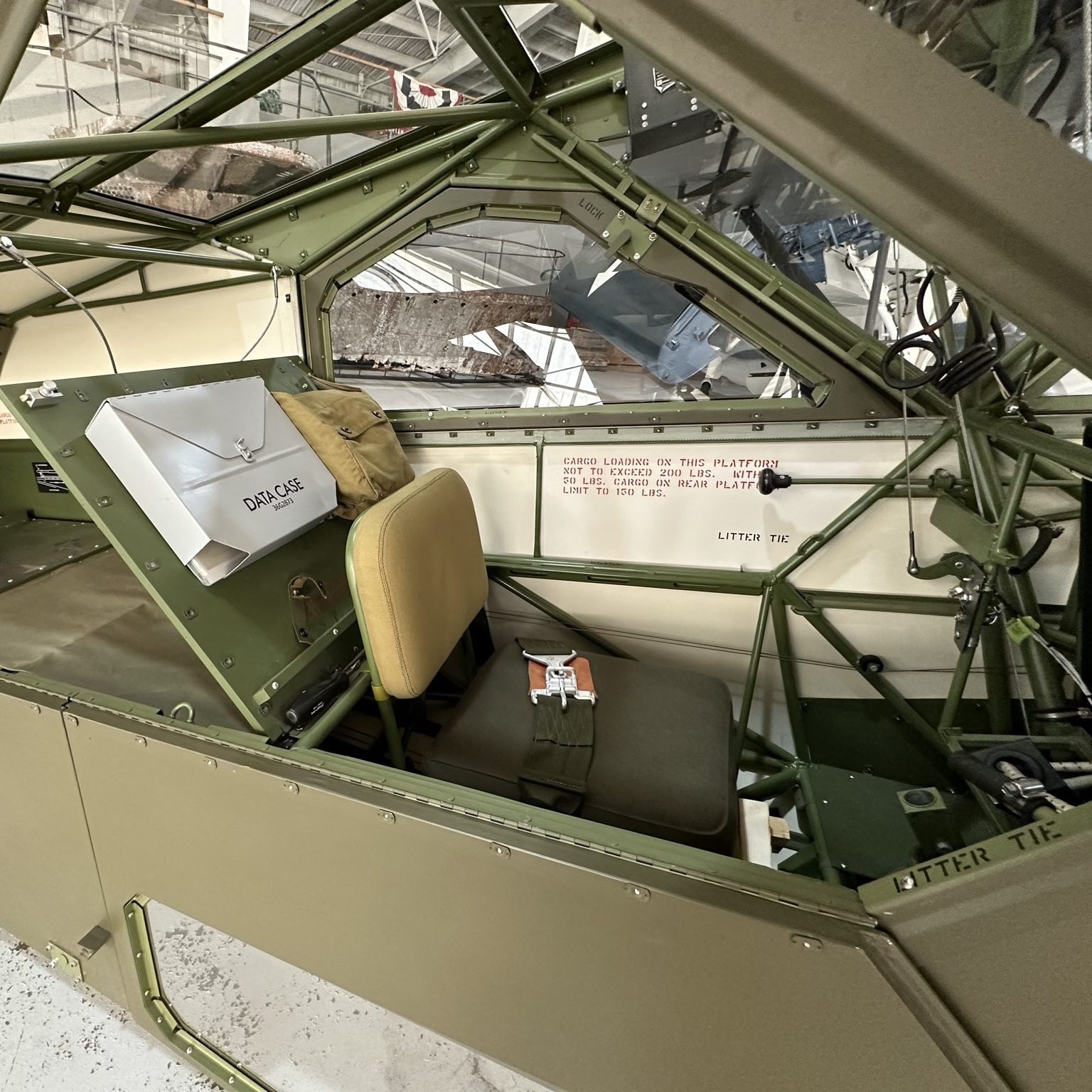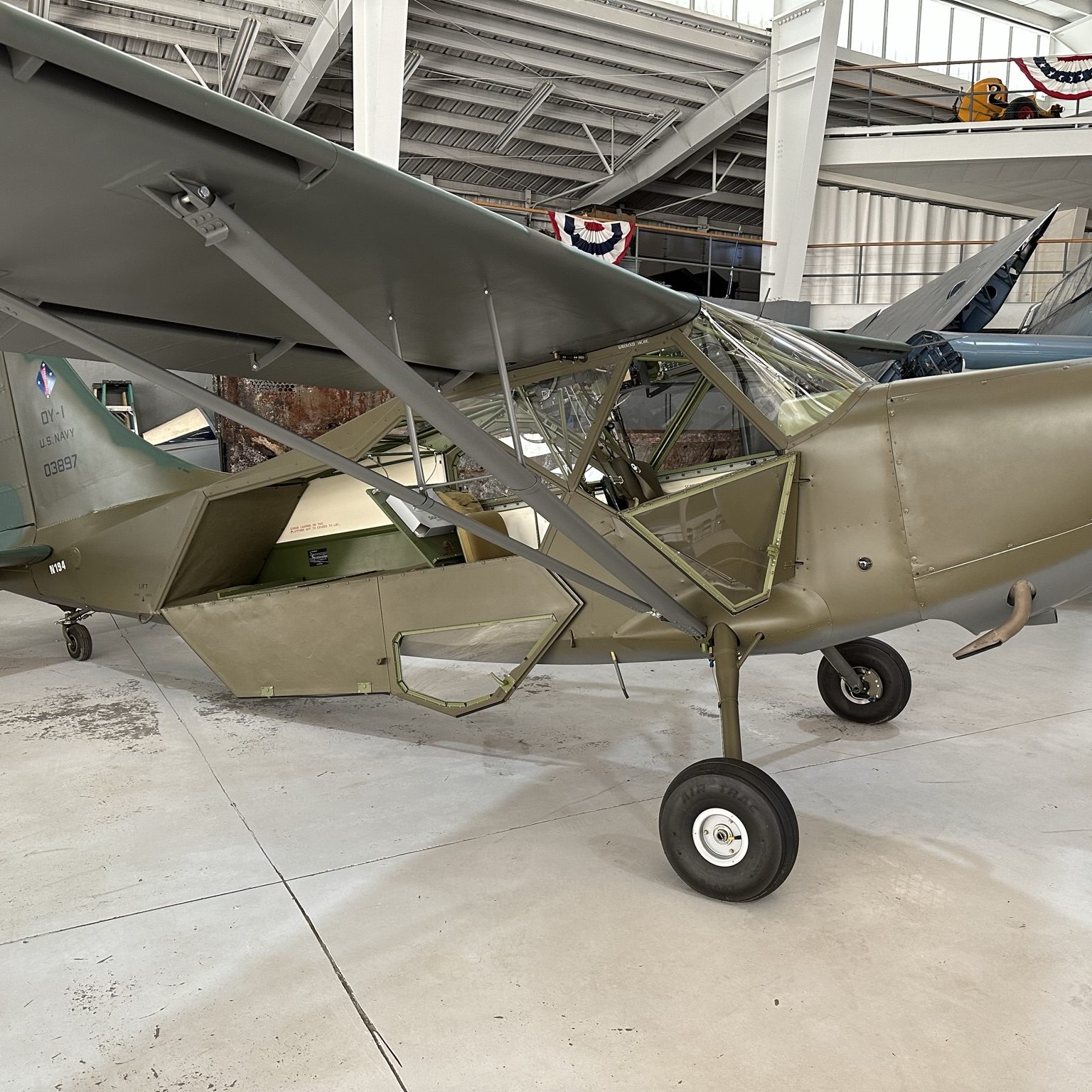During World War II, the Stinson OY-1 (Army designation known as an L-5) Sentinel played a crucial role as a versatile liaison and observation aircraft. Known for its reliability, ruggedness, and remarkable performance, the Sentinel became a valuable asset for the U.S. Army Air Forces and U.S. Marine Corps / U.S. Navy as well as the Royal Air Force under Lend-Lease.
Developed by the Stinson Division of the Vultee Aircraft Company (Consolidated-Vultee in 1943), the OY-1 Sentinel was loosely derived from the civilian Stinson Model 105 Voyager. It was specifically designed for military use and made its first flight in 1941. The aircraft featured a high-wing configuration and a robust structure, allowing it to operate in various terrains and challenging conditions.
With its powerful engine, large slotted flaps, and half-span fixed wing slots, the Sentinel could operate from improvised airstrips, small clearings, or even unprepared fields. This flexibility made it an ideal choice for reconnaissance missions, artillery spotting, medical evacuations, and transporting personnel or supplies to remote locations.
Equipped with a six-cylinder Lycoming O-435-1 engine, the OY-1 Sentinel had a maximum speed of around 125 mph and a range of approximately 400 miles. The OY-1’s ability to fly low and slow allowed for effective observation and communication with ground forces. The aircraft was often fitted with cameras, additional radios or litters, depending on the mission requirements.
The Stinson OY-1 Sentinel served with distinction in various theaters of World War II, primarily Italy, Western Europe, Pacific, and China-India-Burma theater. It played a vital role in supporting ground operations, providing vital intelligence, and conducting search and rescue missions. Even after the war, the OY-1 Sentinel continued to serve in the military, as well as civilian roles, such as forest fire spotting and aerial surveying.
The OY-1 Sentinel now on display at the American Heritage Museum in our annex hangar is on loan from a donor with the intention of becoming a permanent addition to our collection within the next several years. The aircraft was meticulously restored by noted Stinson experts Duncan Cameron and Tab-Air of East Troy, WI and has been returned to its original factory finish and markings as it served with the USMC in the Pacific Theater. A large panel in the right rear fuselage folds down to accommodate a stretcher in place of the rear observer. This very aircraft was used during the Battle of Okinawa from April to June of 1945.
See the OY-1 Sentinel during our special event weekends in the hangar through the summer and see it fly along with the L-4 Grasshopper “Rosie the Rocketer” during our Historic Aviation Weekend on September 21st and 22nd, 2024.







